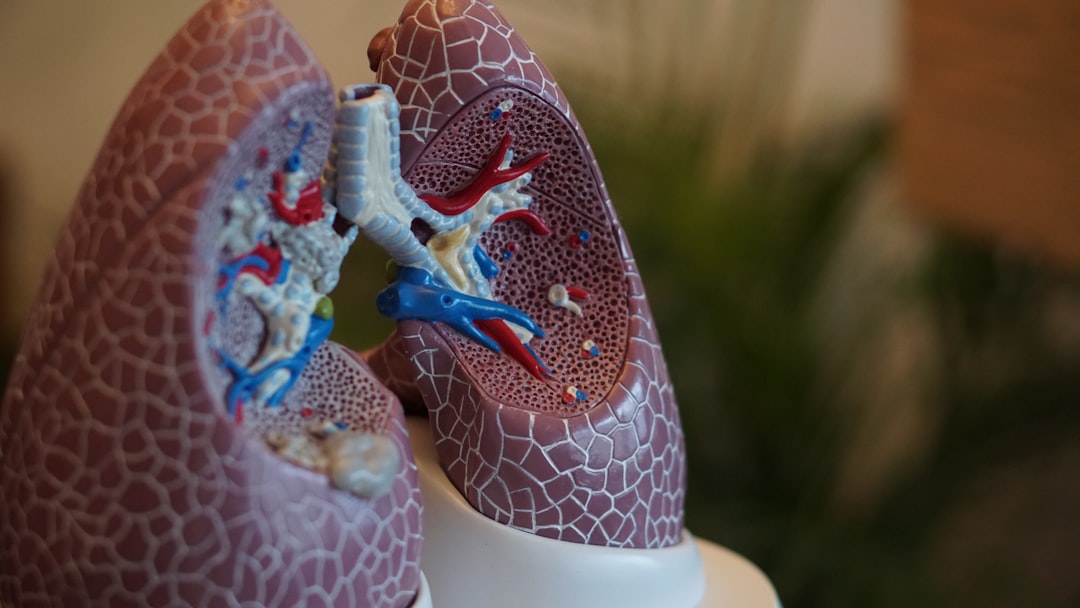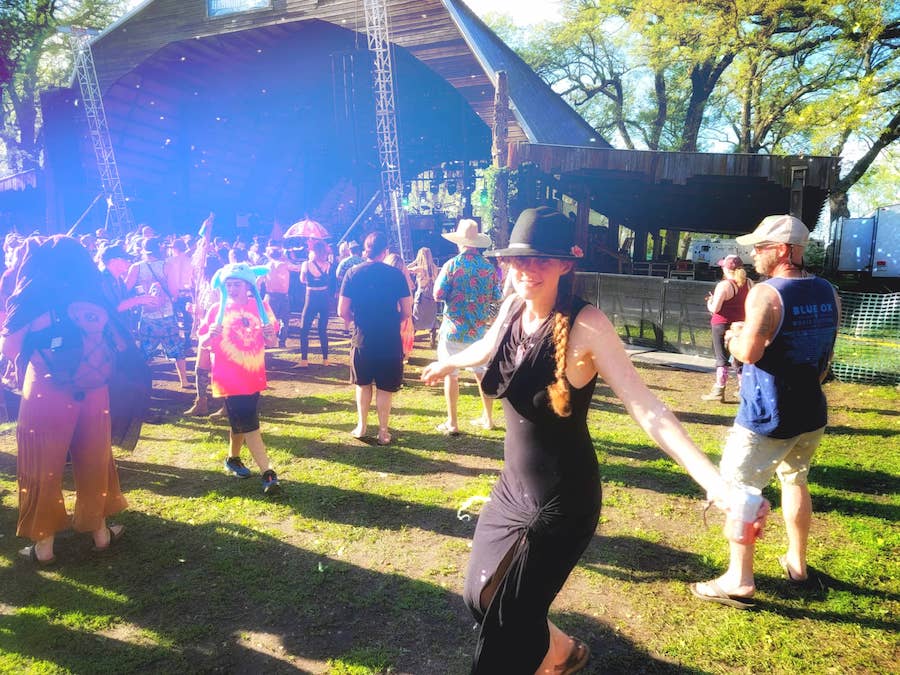Is Muscle Memory Even Real?

Photo by Scott Webb on Unsplash
When we think of muscle memory, we think of something like riding a bicycle: A physical activity of some sort that you once learned that your body just remembers how to do, no matter how long it’s been since the last time you did it. You don't have to think about it, you just hop on that bicycle, your muscles do their thing, and off you go, no matter where your mind is wandering.
The other thing that some people consider is that memories are "stored" in muscles. There is anecdotal evidence out there of people having repressed memories resurface when in a massage or acupuncture session, leaving the impression that the newly freed memory was stored somewhere within the fibers of your muscle tissues.
In this post, I’ll cover both concepts.
Physical Muscle Memory.
A couple of years back, a team of researchers at Keele University in England discovered that “muscle memory” actually does exist on a genetic scale within the muscles themselves. Genes in the muscle can remember periods of growth, which can help them grow later in life.
I’ll break it down...
Let’s take skiing for example.
I was a ski bum for four years right out of college, and I skied somewhere around 110 days a year. The other day, I was looking at an old picture of myself and my jaw fell on the floor noticing how bulky my leg muscles used to be (“dang I looked good,” was my inner thought). My quads, glutes, and hamstrings were very defined.
I don’t ski nearly as much anymore, so my legs are not quite the ripped bulk of muscle tissue they once were (sigh).
However, if memories of growth are stored in the genetic makeup of my leg muscles, that means if I were to start doing regular leg days again or even skiing on a daily basis, I would be able to quickly regain the strength in my legs that I once had, and faster than if I were starting from scratch.
This could apply to recovering from injuries as well.
If an athlete’s muscle grows then they get injured and loses some of that growth, this “memory” may help in their recovery as they work to regain strength in that atrophied muscle.
How does this work exactly? Researchers studied over 850,000 sites on human DNA, and what they found was that following exercise, genes get marked or unmarked with special chemical tags. After the exercise, the muscle returns to normal, but then this chemical tag will help that muscle grow again following exercise later in life.
There was a belief that muscle memory was kind of a misnomer; it was thought that the "muscle memories" were actually stored in the brain with all your thoughts and other recollections. While this may be true in some situations, perhaps even when it comes to things like riding a bike or the actual skill associated with skiing, this study finds that some type of memory is actually in the muscles themselves.
Our muscle’s memories of trauma.
It’s likely all of us have heard of PTSD, or post-traumatic stress disorder. It affects as many as 20% of veterans returning from combat zones, and can even affect people who have suffered through natural disasters, abuse, sexual trauma, car accidents, and so on.
When someone has PTSD, certain triggers, say a nearby crash from an unknown source, may psychologically put them back in the time and space of their trauma. Their body’s physical reactions follow: The sympathetic nervous system kicks them into fight-or-flight mode, they are hypervigilant, hyperalert, and ready to do whatever they have to to get out of that situation. Blood is flowing away from their organs and to their muscles to help them fight or flee. While they may not be back in Afghanistan, the experience can feel very real.
PTSD doesn’t have to come from the battlefields of the middle-east though; it's estimated that somewhere around 70% of people experience trauma in life at one point or another. Just because your trauma wasn’t born in a combat zone or “as bad as that other person’s trauma,” doesn’t mean the trauma isn’t valid and that it doesn’t still affect you.
Somatic experiencing is a form of psychotherapy that helps people process trauma through experiencing the physical responses that trauma has on the body. It helps people build awareness and self-regulation, and eventually re-establishes the mind-body connection that was lost as a result of this trauma.
Dr. Peter Levine, who founded Somatic Experiencing in the ’70s, observed how wild animals would shake or shudder or run after a close call with a predator. He interpreted this as a physical release of the sympathetic nervous system and believed that humans could have that same experience if they are able to mentally move past the notion that they have to, “keep it together."
Somatics combines movement practices as well as meditation, breathwork, and bodywork with traditional talk therapy with the goal of fostering a physical awareness and mind-body connection.
Jason Tougaw, a professor and author of many books related to neuroscience, memory, and culture, talks in his book about the physical reactions he carried to adulthood after being abused by a stepfather. If a barber grazed his shoulder, he would tense up as that fight-or-flight reaction automatically kicked in. Somatics helped him release some of these physical reactions, practicing exercises like pushing his practitioner across the room while shouting, “no!”
Those who have suffered rape or sexual trauma are known to have a defensiveness around their bodies, and an aversion to touch. The sanctity they once had in their physical bodies was taken out from under them by the trauma they faced, and re-establishing that mind-body connection and sense of safety in their bodies is a hurdle they must face in the healing process. Because of these reactions, massage therapy is being explored as a complementary treatment for PTSD and trauma, as touch therapies where the recipient is in control can be an empowering and healing process as they find ways to physically release that trauma from their bodies.
So is trauma “stored” in the body?
Why do certain people start crying during a massage session, or have repressed memories resurface during acupuncture?
The idea that these memories or traumas are “stored” in the muscle tissue might not be the most scientific explanation, however, there is some validity to the concept.
As we discussed before, PTSD will get you “stuck” in that fight-or-flight response, which consequently triggers very physical reactions. When these traumas aren't processed, they can impede our brain’s natural ability to recover from trauma and may turn up as illness, disease, or physical pain elsewhere in the body.
This is a key belief for many professional healers, but at the end of the day, it’s a difficult idea to prove.
In Traditional Chinese Medicine, the mind and body are seen as inseparable units, and ailments are looked at from the perspective of the whole body and its inherently interconnected systems as opposed to the segmented parts and symptoms that modern medicine treats.
When someone experiences trauma, that person’s Qi, or life-force energy, can get stuck, resulting in tension or ailments in that particular region of the body. Acupuncture has been credited as a complementary treatment for trauma and other mental health disorders, as it can help calm the nervous system and keep some of the physiological symptoms of trauma at bay.
In this study, electroacupuncture was given to people suffering PTSD after an earthquake, and the results found that it was significantly more effective than previous treatment and outperformed the group taking paroxetine, or an SSRI antidepressant.
While more studies continue to be done to prove the efficacy of acupuncture as trauma treatment, the fact that TCM views the body and mind as equally important could be a strong foundation for releasing all aspects of trauma, the mental and the physical, instead of treating them separately.
A more extreme example of trauma being stored in the body, not necessarily in muscles, is being explored by Dr. Kelly Turner, Ph.D., founder of the Radical Remission Project. She has researched cases from all over the world of people who have found gone into remission from stage 4 cancers after being told that their chances of survival were bleak to none. Many of these people have shared their stories about how they released past trauma or emotional stress as a key turning point in their healing journeys. While this might be an extreme example, medical doctors generally don’t have explanations as to why radical remissions happen, so Dr. Turner looked to the survivors and the alternative doctors who helped them to see if there were any common threads among the 1,500+ cases she has studied.
Final Thoughts
When it comes to memories stored in muscles, there are the hard, scientific genetic explanations of building muscle and remembering skills we learned as kids then repeated over and over.
Then, there’s trauma, a complex and multifaceted issue most people face in some form or another but we have yet to fully understand.
While there are physical, physiological, and psychological reactions people have to trauma, the interconnectedness that the memory has on the mind and the body is still being explored. Saying memories are “stored in muscles” might not be the best, most scientific explanation, as more evidence is yet to be uncovered, but there is some truth to our somatic experiences when it comes to memories, particularly the traumatic ones.












If you enjoyed this article or recipe, please consider giving it a comment! It helps others discover my blog and recipes, and your comments always make my day :) Thank you for your support!
Your email address will not be published. Required fields are marked *